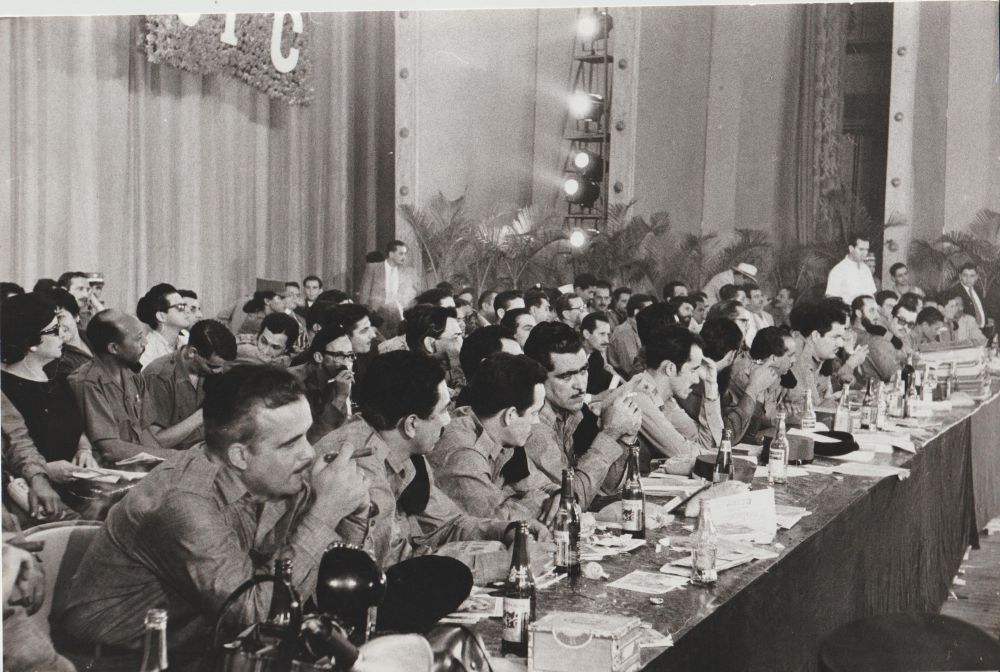In building an authoritarian state, control over a country’s labor movement is as important, if not more so, as control over the press and the willingness of citizens to criticize. This was especially true in Cuba after 1959 when the Confederación de Trabajadores de Cuba [CTC] committed to a “no-strike” policy in order to help stabilize the economy and promote industrial growth for the benefit of all Cubans. However, over the course of 1960, leaders of the revolutionary government, especially Fidel Castro, increasingly began to insist that any criticism of its leadership or contestation of policies constituted an invitation for the United States to invade, intervene, or subvert the state. As a result, the CTC began to further violate its own rules out of solidarity with Cuban sovereignty: here, elected leaders appeared not in the working-class attire of civilians but as militiamen, armed and at the service of Fidel Castro’s state-directed vision of change. Havana, March 1960. Andrew St. George Collection, Smathers Library, University of Florida.
